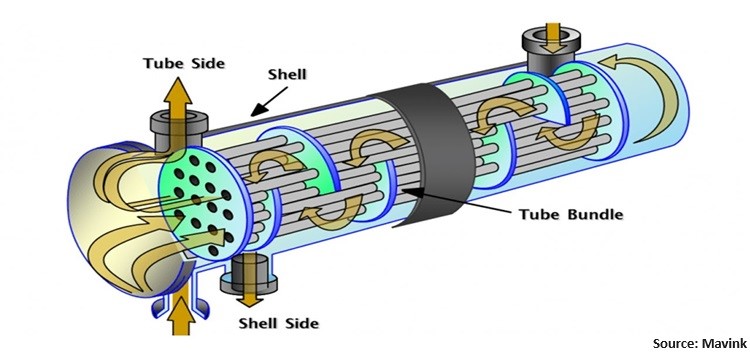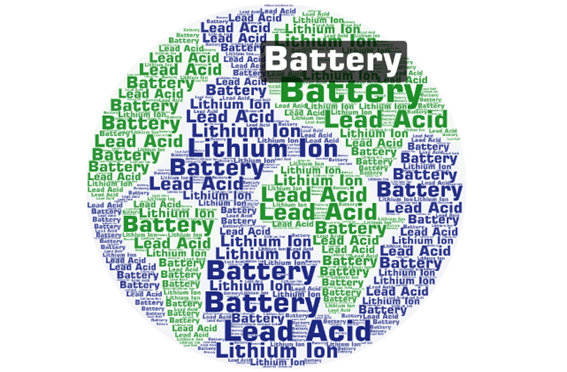
Wireless Power Transmission Market by Type (Devices with Battery and Devices without Battery), by Technology (Near-Field Technology and Far-Field Technology), and by Application (Receiver and Transmitter)- Global Opportunity Analysis and Industry Forecast 2023-2030
Market Definition
The Wireless Power Transmission Market size was valued at USD 11.31 billion in 2023 and is predicted to reach USD 46.49 billion by 2030 with a CAGR of 22.4% from 2024 to 2030.
Wireless power transmission, also known as wireless power transfer (WPT), wireless energy transmission (WET), or electromagnetic power transfer refers to the transfer of electric energy without any physical link or wire. In this system, the transmitter device drives power from an external source, generating a time-varying electromagnetic field that transmits power across space to a receiver device, which extracts power from the field and supplies it to an electrical load. There are two types of wireless power techniques– near-field and far-field. In near-field or non-radiative techniques, power is transferred over short distances. In far-field or radiative techniques, also called power beaming, energy can be transported to longer distances but it must be aimed at the receiver.
Market Dynamics and Trends
The growing tendency of consumers to “go wireless” due to the freedom of mobility, handy operations, and ease of compliance is a significant factor driving the wireless power transmission market. Also, factors such as the adoption of the Internet of Things (IoT) as well as the advanced use of the internet that utilizes cutting-edge technology at full potential employing wireless power are expected to boost the market growth. Moreover, economies such as the U.S., Japan, and Korea are investing extensively in R&D and contracts for the adoption of wireless power transmission technology in order to reduce the cost of installation for overhead cables and acquire the full benefits of power system networks.
In February 2022, Governor Gretchen Whitmer announced a contract award to build a first-in-the-U.S. public wireless in-road charging system. This, allows electric vehicles (EVs) to charge while in motion or stationery. Electreon was selected to build an electric road system (ERS) in Detroit as part of the inductive vehicle charging pilot program. This, in turn, is expected to drive the wireless power transmission market growth throughout the forecast period.
The dearth of wireless equipment infrastructure coupled with the introduction of uncertified products at low cost are factors expected to restrain the growth of the market during the forecast period. On the contrary, the development of wireless-powered drones along with new developments including mini and micro robots for wireless power transfer is expected to create lucrative growth opportunities for the market players in the upcoming years.
Market Segmentation and Scope of Study
The global wireless power transmission market is segmented on the basis of type, technology, application, and geography. Based on type, the market is classified into devices with battery and devices without battery. On the basis of technology, the market is categorized into near-field technology and far-field technology. Near-field technology is further divided into magnetic resonance technology, conductive/capacitive coupling, and inductive technology. Far-field technology is further sub-divided into laser/infrared, and microwave/RF. On the basis of application, the market is segmented into receiver and transmitter. The receiver segment is further sub-classified into smartphones & tablets, wearable electronics, notebooks, EV charging, industrial, and others. The transmitter segment is further divided into standalone chargers, automotive, EV charging, industrial, and furniture. Geographical breakdown and analysis of each of the aforesaid classification include regions comprising North America, Europe, Asia-Pacific, and RoW.
Geographical Analysis
Asia Pacific dominated the global wireless power transmission market in 2021 and is expected to remain dominant in the market throughout the forecast period. This is attributed to the factors such as an increase in disposable income of the middle-class people in this region coupled with the growth in the demand for consumer wireless electronics such as mobile devices, wearables, and computers among others.
Moreover, the surge in the demand for electric vehicles in the automotive industry in this region that utilizes WPT extensively for easy and convenient charging is projected to fuel the wireless power transmission market growth during the forecast period. According to the World Economic Forum, China is the leading producer of electric vehicles in the world, accounting for around 57.4% of the global production of electric vehicles (EVs) and around 500,000 exports in 2021.
North America is anticipated to exhibit substantial growth in the global wireless power transmission market due to the rising awareness and government initiatives regarding clean energy storage in this region.
For instance, in May 2022, Biden Administration launched Bipartisan Infrastructure Law’s USD 505 million long-duration energy storage initiative by lowering the costs and increasing the duration of energy storage resources, which in turn, is expected to fuel the demand for wireless power transmission industry.
Also, the presence of major manufacturers of wireless power transfer systems such as WiTricity Corporation and Qualcomm Inc. that focus on advanced systems is expected to boost the market growth in this region in the coming future.
For instance, in June 2022, Qualcomm Technologies, Inc. introduced a next-generation powerline communication (PLC) device, the QCA7006AQ that is designed to address the needs for EV charging station communications – also known as electric vehicle supply equipment (EVSE). The QCA7006AQ is compliant with the HomePlug Green PHY (HPGP) specification, which is the leading specification for implementing Vehicle-to-Grid (V2G) systems.
Competitive Landscape
The wireless power transmission market includes several market players, such as WiTricity Corporation, Powermat Technologies Ltd., Energous Corporation, Samsung Electronics Co. Ltd., TDK Corporation, Qualcomm Inc., Texas Instruments Inc., Analog Devices Inc., Renesas Electronics Corporation, and NXP Semiconductors among others. These market players are adopting various product launches to maintain their dominance n the global wireless power transmission market.
For Instance, in February 2022, Witricity announced plans to offer its owners an aftermarket wireless charging upgrade package, Halo Charging for selected EVs. It would enable a hassle-free and end-to-end charging experience. Also, in July 2021, Energous Corporation announced the launch of its 5.5W Active Energy Harvesting Developer Kit to provide wireless charging for the development of IoT-enabled and related connected devices.
KEY BENEFITS
-
The wireless power transmission market report provides a quantitative analysis of the current market and estimations through 2022-2030 that assists in identifying the prevailing market opportunities to capitalize on.
-
The study comprises a deep dive analysis of the wireless power transmission market trend including the current and future trends for depicting the prevalent investment pockets in the market.
-
The information related to key drivers, restraints, and opportunities and their impact on the wireless power transmission market is provided in the report.
-
The competitive analysis of the market players along with their market share in the wireless power transmission market
-
The SWOT analysis and Porter’s Five Forces model are elaborated in the study.
-
Value chain analysis in the market study provides a clear picture of the stakeholders’ roles.
KEY MARKET SEGMENTS
By Type
-
Devices with Battery
-
Devices without Battery
By Technology
-
Near-Field Technology
-
Magnetic Resonance Technology
-
Conductive/Capacitive Coupling
-
Inductive Technology
-
-
Far-Field Technology
-
Laser/Infrared
-
Microwave/RF
-
By Application
-
Receiver
-
Smartphones & Tablets
-
Wearable Electronics
-
Notebooks
-
EV Charging
-
Industrial
-
Others
-
-
Transmitter
-
Standalone Chargers
-
Automotive
-
EV Charging
-
Industrial
-
Furniture
-
By Geography
-
North America
-
U.S.
-
Canada
-
Mexico
-
-
Europe
-
UK
-
Germany
-
France
-
Spain
-
Italy
-
Netherlands
-
Denmark
-
Finland
-
Norway
-
Sweden
-
Russia
-
Rest of Europe
-
-
Asia-Pacific
-
China
-
Japan
-
India
-
South Korea
-
Australia
-
Indonesia
-
Singapore
-
Taiwan
-
Thailand
-
Rest of Asia-Pacific
-
-
RoW
-
Latin America
-
Middle East
-
Africa
-
REPORT SCOPE AND SEGMENTATION:
|
Parameters |
Details |
|
Analysis Period |
2023–2030 |
|
Base Year Considered |
2023 |
|
Forecast Period |
2024–2030 |
|
Market Size Estimation |
Billion (USD) |
|
Market Segmentation |
By Type (Devices with Battery, Devices without Battery) By Technology (Near-Field Technology, Far-Field Technology) By Application (Receiver, Transmitter) |
|
Geographical Segmentation |
North America (U.S., Canada, Mexico) Europe (Germany, UK, Spain, Italy, Netherlands, Rest of Europe), Asia-Pacific (Australia, China, India, Japan, South Korea, Vietnam, Taiwan, Rest of Asia-Pacific), Rest of the World (Latin America, Middle East, Africa) |
|
Companies Profiled |
WiTricity Corporation, Powermat Technologies Ltd, Energous Corporation, Samsung Electronics Co. Ltd, TDK Corporation, Qualcomm Inc., Texas Instruments Inc, Salcomp Plc, Renesas Electronics Corporation, NXP Semiconductors |
KEY PLAYERS
-
WiTricity Corporation
-
Powermat Technologies Ltd
-
Energous Corporation
-
Samsung Electronics Co. Ltd
-
TDK Corporation
-
Qualcomm Inc.
-
Texas Instruments Inc
-
Analog Devices Inc.
-
Renesas Electronics Corporation
-
NXP Semiconductors




 Speak to Our Analyst
Speak to Our Analyst

































